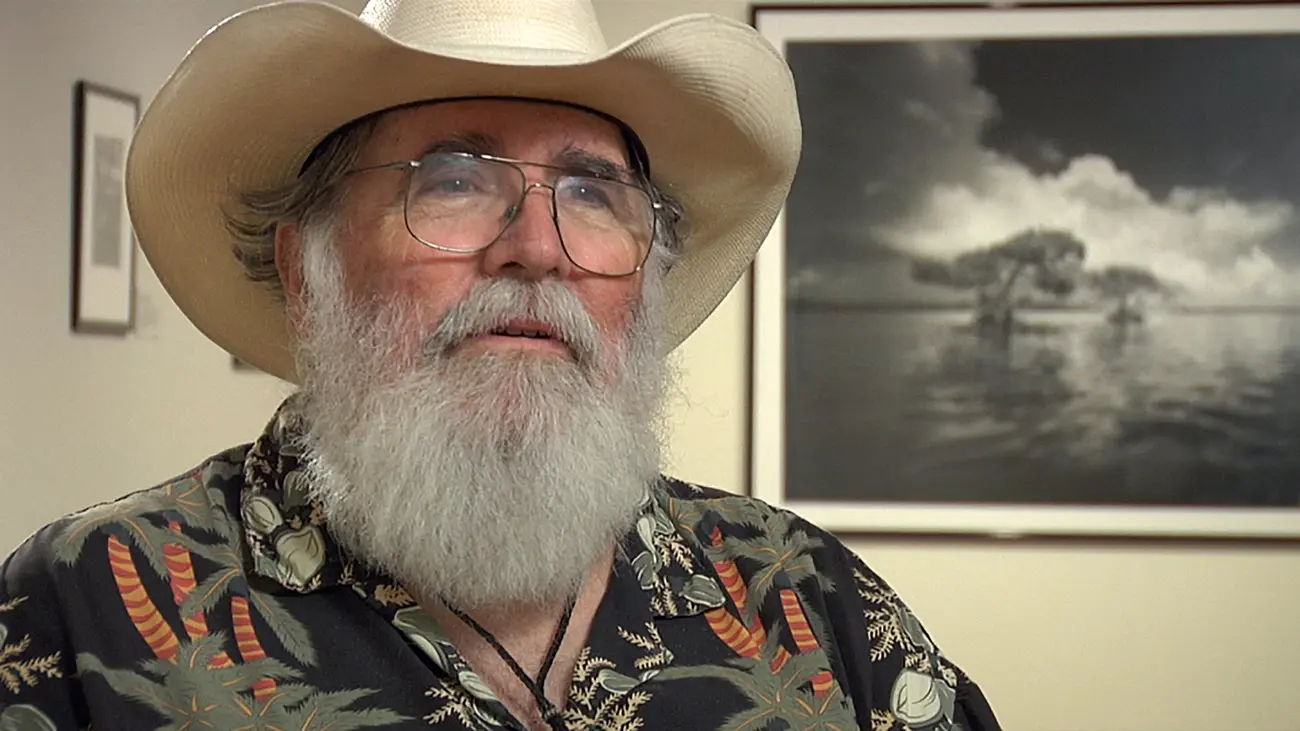Renowned Florida photographer Clyde Butcher suffered a stroke on May 6, which affected his speech and coordination on his right side. Butcher’s rehabilitation is going well, and he expects to be back at work in the fall.
The black and white photographs of Clyde Butcher allow us to look at the natural Florida in a different way.
When most people think of Florida’s natural environment, an explosion of color comes to mind. We imagine multiple shades of green in a Florida swamp, bright red Poinciana trees, and the turquoise waters of the Gulf Coast. We picture the oranges, purples, pinks, and blues of the Florida sky.
“The main reason to do black and white is because the colors are so vibrant you can’t see the image,” Butcher says. “Black and white shows the oneness of nature. Without the whole system, nature doesn’t work, and I think the black and white brings a reflection of that in the work so you can actually see the landscape. You don’t just see the color.”
Butcher’s work has been compared to that of photographer Ansel Adams, best known for his black and white images of the American West. Like Adams, Butcher mostly uses a large format camera. Some of his images are as large as 6 feet by 9 feet.
“When you’re in nature you’re scanning, and you’re looking around, and you’re putting this whole scene of nature together in your mind,” Butcher says. “That’s the same feeling I want you to get looking at a photograph, is being there.”
Capturing his amazingly detailed images of Florida’s natural landscape sometimes requires that Butcher wait hours or even days for the right conditions. He’s known to stand chest high in water or lay on the ground for long periods of time to get the photograph he wants.
Much of Butcher’s work has a three-dimensional quality. Clouds, for example, often seem to be floating right out of the photograph toward the viewer. “I’ve been working with a wide-angle lens since 1960, so I’ve learned to be able to create these spaces,” Butcher says.
Many of Butcher’s photographs contain empty spaces that seem to invite the viewer in, to participate in the natural scene depicted. While some of his images are of coastal and island settings, most are focused on the Everglades. “For some reason you call it a swamp, I guess there’s some designation, but it’s actually more of a river,” Butcher says. “It’s a unique place. People don’t know what they have here. It’s gorgeous.”
Butcher’s photographs do not include people. His images seem to capture a time in Florida before humans arrived to build highways and homes.
“One of the main reasons I don’t put people in the pictures is because if someone is there, they’re taking your space,” Butcher says, adding that people’s clothing and hairstyles could “date” his photographs and he wants the images to exist outside of a particular historical period.
Butcher goes beyond preserving Florida’s natural environment in his photographs. He is an active environmentalist who brings attention to the need for conservation with his work. Butcher has created exhibits specifically to benefit the Florida Department of Environmental Protection, the state’s “Save Our Rivers” program, the South Florida Water Management District, and a variety of environmental groups.
In 1998, Butcher was inducted into the Florida Artists Hall of Fame.
Butcher’s Big Cypress Gallery is located in the heart of the Everglades, between Naples and Miami on the Tamiami Trail. His gallery and studio is in the middle of a National Park that protects the wild Florida.
From the Big Cypress Gallery, trained guides lead visitors on “Swamp Walks” through the water and trails of the Everglades, exposing them to cypress trees, alligators, exotic birds, and rare wildlife. Butcher and the guides encourage people on the walk to remain silent for five minutes, to become absorbed in the unique natural surroundings.
“People are shocked that Florida is still here. They think about Disneyworld and Orlando and Miami, and they think it’s gone,” Butcher says. “Florida’s still here, it’s just a little harder to get to.”
Butcher is featured in the latest episode of “Florida Frontiers Television,” now available online at myfloridahistory.org.
